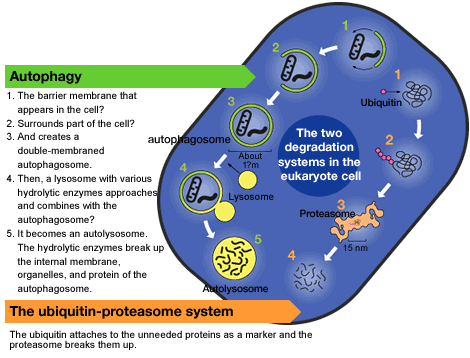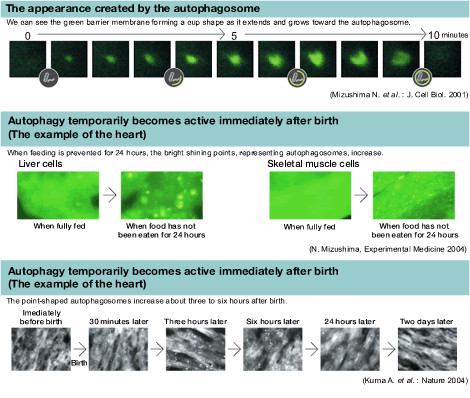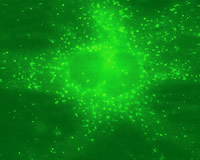When, where, and how often does autophagy occur within a body? To find out, we linked a protein (LC3) attached to the autophagosome membrane with the gene of the green fluorescent protein and created a genetically modified mouse to express this throughout its entire body. After 24 hours without food, autophagy was active in most organs. It was extremely interesting that autophagy was temporarily active in different organs in a newborn immediately after birth. In mice, for example, the peak was reached from three to six hours after birth and returned to a low level within a day or two. Newborns in which the supply of nutrition from the umbilical cord was suddenly interrupted were plunged into a severe state of starvation.
When we produced mice that do not cause autophagy, they had a normal birth, but immediately afterward suffered from severe nutritional deficiency and lowered energy. The role of autophagy is the inevitable decomposition of part of oneself during starvation, and obtaining and recycling the nutritional elements obtained from that process.
Autophagy also gradually occurs even when the body is not in a state of starvation. This is believed to serve the function as a cleaner inside the cell. In other words, autophagy is thought to have two important roles: to supply nutrition during starvation and to regularly purify the cell interior. The function of autophagy was an enigma for a long time, but it is now rapidly being cleared up. |


